


p2 uw organize Sessional instructors at the University of Waterloo vote to unionize. January 18, 2023 Volume 46 Issue No. 14 uwimprint.ca im print green carpet P7 UW Alum organises Canada’s first major fashion show. voices P8 Local artists share their stories and experiences with diversity and inclusion. disrespectfully P10 The University of Waterloo has a third spaces problem. uw @ celc UW engineers head to Calgary for leadership conference P4 COURTESY UW ATHLETICS Two Warriors hit the ice in New York
Sessional instructors elect bargaining committee to correspond with the university.
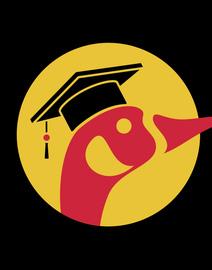

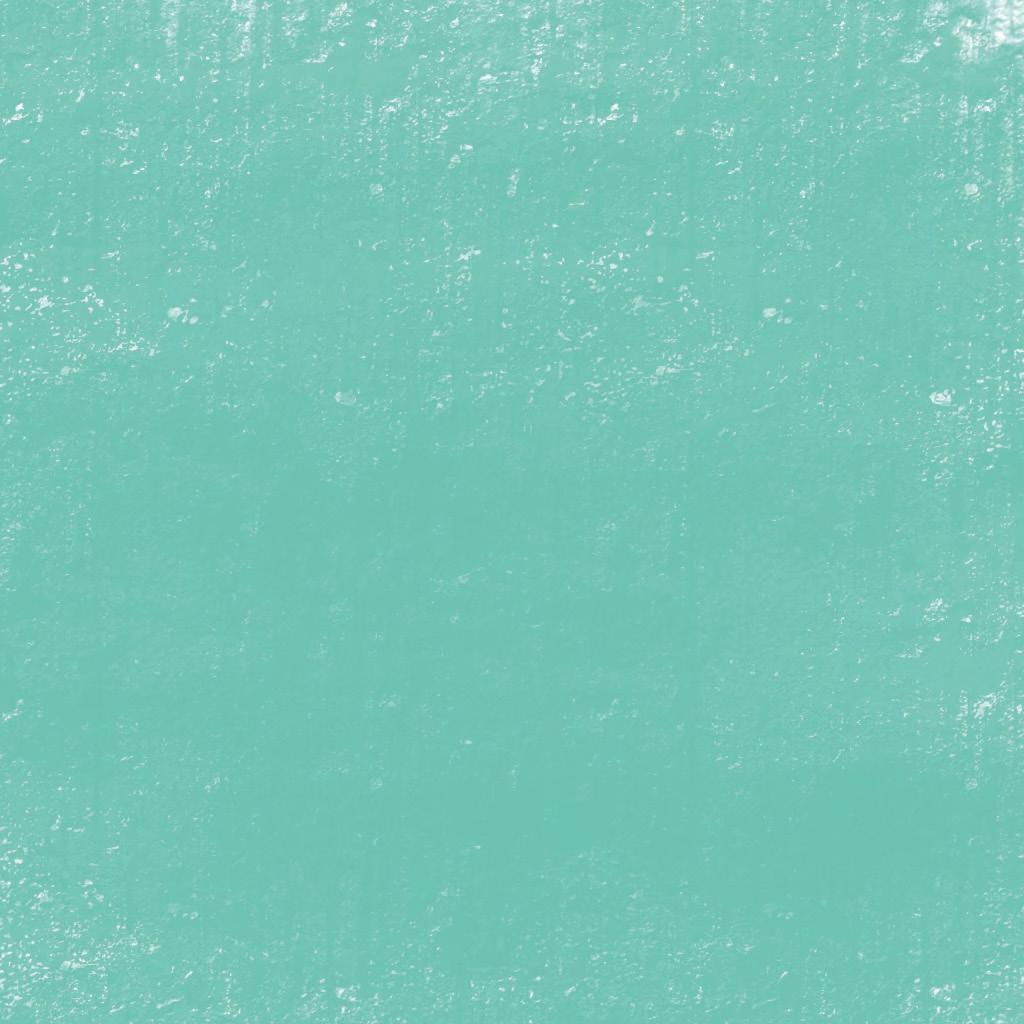






450+ Unlimited Discounts 25% off Top Brands & more! Exclusive Contests & giveaways It’s official! SPC and WUSA have teamed up to make saving money even better. Scan to Join!
Student workers call for a union at UW
VIA ORGANIZEUW

Wednesday, January 18, 2023 | Vol. 46, No.14
Student Life Centre, Rm 0137 University of Waterloo Waterloo, Ontario N2L 3G1
P: 519.888.4048 | F: 519.884.7800
uwimprint.ca
Publisher: Andres Fuentes
Executive Editor: Meagan Leonard
Editorial Assistant: Alicia Wang
Sales Rep: Vacant
Distribution: Vacant
Volunteer Co-ordinator: Vacant
Editorial Staff
Managing Editor: Abhiraj Lamba
Creative Director: Sharanya Karkera
News Editor: Remy Leigh
Assistant News Editor: Meghana Anthannagari
Arts & Life Editor: Nadia Khan
Assistant Arts & Life Editor: Vacant
Science & Technology Editor: Bethany Poltl
Assistant Science & Tech Editor:
Sports Editor: Avitej Singh
Satellite Campus Editor: Vacant
Opinions Editor: Charlie Dickson
Distractions Editor: Vacant
Head Designer: Jia Chen
Assistant Head Designer: Mahnoor Irfan
Photo Editor: Melissa Hughes
Video Editor: Andrew Yang
Assistant Photo & Video Editor: Vacant
Graphics Editor:
Assistant Graphics Editor: Vacant
Copy Editor: Eduardo Matzumiya
Assistant Copy Editor: Tanya Kathryn Leung Intern: Vacant
Imprint is the official student newspaper of the University of Waterloo. It is an editorially independent newspaper published by the Federation of Students, University of Waterloo, carrying on business as the Waterloo Undergraduate Student Association (“WUSA”), a corporation without share capital. Imprint is a member of the Ontario Community Newspaper Association (OCNA). Content is provided for general information, education and entertainment purposes only, and does not necessarily reflect the views of the Editorial Committee, WUSA, staff or advertisers. We welcome editorial submissions, articles, letters, photos and graphics (“Submissions”) for publication in any edition of Imprint, subject to terms and conditions for Submissions, which are available upon request. Imprint does not guarantee that Submissions will be published. Imprint reserves the right to approve and edit any Submissions to be published. A Submission will not be published if it is determined to be libelous or in contravention of Imprint’s policies, code of ethics and journalistic standards. Imprint may reproduce content, including Submissions, commercially in any format or medium. Imprint disclaims direct and indirect liability for reliance on or use of its content. Imprint is published every Wednesday during fall and winter terms, and every second Wednesday during the spring term. Imprint reserves the right to screen, edit and refuse advertising. One copy per customer. Imprint ISSN 0706-7380. Imprint CDN Pub Mail Product Sales Agreement no. 40065122.
Next scheduled pitch/post-mortem meeting: Jan. 18 at 4:00 pm in SLC 0137
Imprint TLDR: This week on campus
Meagan Leonard Executive Editor
JAN
16
UW profs call to reinstate mask mandate
A memo sent to the UW president’s office and dean of arts expressed concern over lax masking requirements at the university and asked for the policy to be reinstated. The memo, signed by at least a dozen faculty, states, “The university owes a legal and moral duty to enact reasonable measures to protect the health and safety of community members, and to make the university accessible, including to those with underlying conditions,disabilities, or who have close contact to immunocompromised friends and family members.”
Creation of the memo was led by Anna Drake, assistant professor in the department of political science, who said she was unable to gain the unanimous support of her department. UW has encouraged staff and students to continue wearing masks in crowded spaces.
Source: CityNews Kitchener
JAN
16
UW will test its emergency communication system Jan. 23
neering student, has organized an international robotics contest called Mecha Mayhem that will be held at the BMO Centre in Calgary Feb. 3 to 5. Over 120 teams from high schools and middle schools around the world will participate in the event. Robotics kits used during the competition will be donated following the event with the goal of promoting STEM education.
Zhou organized the event with his brother, Justin, who is also an engineering student at UW in the Masters program and Engineering Excellence Fellowship. Zhou also operates a nonprofit, Western Mechatronics, that he started to encourage young people to get involved in robotics competitions and education.
Source: India Education Diary
JAN 16
UW team advances to Deep Space Food Challenge semi-finals
A team from the University of Waterloo will compete in Phase 2 of the Deep Space Food Challenge, a competition to develop technologies to produce food for future space missions. The technologies could be used to feed astronauts on missions to the
moon and Mars, along with harsh environments on Earth. Four teams will advance to Phase 3, which involves construction of fullscale food production technology. The competition is part of a partnership between the Canadian Space Agency and NASA to develop methods of nutritious food production that use minimal materials, energy, and water.
Source: Yahoo! News
JAN 17
UW prof to co-chair National Quantum Strategy (NQS) advisory council
UW’s Dr. Raymond Laflamme has been asked to serve as the co-chair of Canada’s NQS advisory council and will guide the country’s development of quantum technologies. The NQS is transforming the development and design of everything from drugs to batteries and working to create a workforce that is prepared to use and implement new science and technology across various fields. Laflamme is the founding director of the Institute for Quantum Computing at UW.
Source: UW Daily Bulletin
Imprint acknowledges that the University of Waterloo is situated on the traditional territories of the Attawandaron (Neutral), Anishnaabeg, and Haudenosaunee Peoples. The University of Waterloo is situated on the Haldimand Tract, land promised to Six Nations, which includes six miles on each side of the Grand River. Therefore, Imprint recognizes and respects this land that it is situated upon.

UW will be testing the campus-wide emergency communication system on Monday, January 23 at 1:15 p.m. The test will involve tweets to @UWaterloo and @WatSAFEapp, the WatSAFE mobile app, WatSAFE desktop application, along with portal alerts and push notifications. The message will read, “TEST of the UW Emergency Notification System. During an actual emergency or threat you would receive instructions. No action is required.” Approximately 15 minutes later, a deactivation message will say, “The test of the UW Emergency Notification System is complete.”
Source: UW WATsafe
JAN 16
UW student organizes Mecha Mayhem event in Calgary, Alta.
Jonathan Zhou, an undergraduate engi-

January 18, 2023 | news | 3
VIA PEXELS
science & tech

Waterloo engineers attend Canadian Engineering Leadership Conference
An interview with Emily Smyth, a member of UW’s delegation to the Canadian Engineering Leadership Conference.
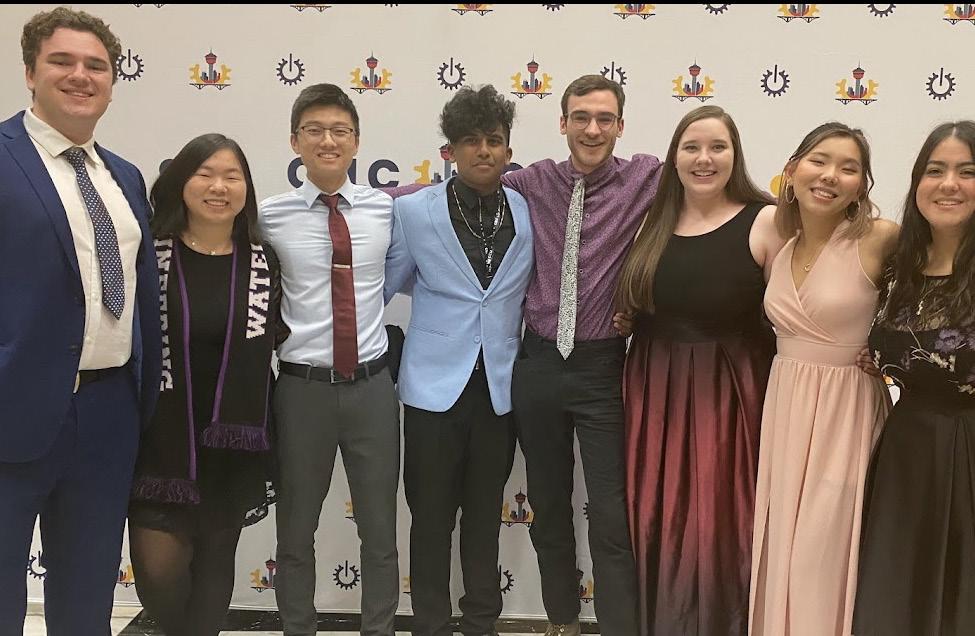
From Jan. 2 to Jan. 8 a delegation of University of Waterloo engineering students attended the Canadian Engineering Leadership Conference (CELC) in Calgary. Alaina Hansen, Curtis Hall, Duke Gand, and Shubhaangan Manoranjan were in attendance for Engineering Society ‘A’ and Emily Smyth, Carson Bay and Grace Marshall for Engineering Society ‘B’. Imprint sat down with Smyth to learn more about the conference.
“I have been to many conferences, but what I was hoping to learn more [about] was about the role reviews for the positions of the CFES and about the motions that were being discussed,” said Smyth, a chemical engineering student and EngSoc VP Communications. “I was also very interested in talking to other students from other institutions and [learning] about what they do.”
Tell me about the conference overall.
The conference I went to is called the Canadian Engineering Leadership Conference (CELC). This is an annual student-run conference that has two main objectives.
First, the annual general meeting for the CFES (Canadian Federation of Engineering Students) happens where each school gets to bring motions forward and vote on them. Then the second is to provide a platform for students all across the country to collaborate and learn from industry partners, sponsors and other students. Over 40 engineering schools participate in this, and we also hold the elections for the new CFES exec team and the Ontario Ambassador.
What were you hoping to learn at the conference?
I have been to many conferences, but what I was hoping to learn more [about] was about the role reviews for the positions of the CFES and …the motions that were being discussed. I was also very interested in talking to other students from other institutions and [learning] about what they do.
What types of workshops did you attend?
There were four main streams for the conference which were Governance, EngSoc, Leadership and Theme-Innovation. Due to my role in my own Engineering Society, I attended the Governance stream as the VP External for the University of Waterloo B. The sessions I attended included updates on
the officer team, budget review for the CFES, engineering accreditation in Canada and the general assembly. However, the other delegates were able to attend sessions in the other streams where they did a case competition and went to sessions such as Innovative Solutions to Advance our Energy Evolution.
What are your takeaways from the conference?
My main takeaway from the conference is how the CFES runs [all the positions] and how each one of these roles can support every engineering student across Canada. I also learned lots about accreditation for engineering in Canada and how to do joint bids. I also learned lots about the motions that were passed.
As EngSoc VP Communications, what are you looking forward to bringing to EngSoc this term?
I have been the VP [of] Communications for the Engineering Society ‘B’ since Sep-
tember 2022. My role is split into two portfolios which are external and internal. For internal, I help support all the advertising and social media for the Engineering Society. Then externally, I represent our school at a provincial and national level. This term, I look forward to helping to make sure everything runs smoothly for advertising by supporting my advertising commissioner. I am also looking forward to being able to send more people to the remaining conferences this term which are CALE (Conference on Advocacy and Leadership in Engineering), which is being held in Guelph, and CSE (Conference on Sustainability in Engineering), which is being held in Vancouver.
Other messages to fellow engineering students
A message I would let other engineering students know about is just to get more involved. Join a design team or a student club but remember to have good time management and always prioritize your mental health!

4 | January 18, 2023
write for science and tech Got an interesting science or tech story you want to write about? Email science@uwimprint.ca
Bethany Helaine Pöltl Science & Technology Editor
COURTESY EMILY SMYTH
Velocity drives innovation on campus
Connecting with an ecosystem of changemakers
 Bethany Helaine Pöltl Science & Technology Editor
Bethany Helaine Pöltl Science & Technology Editor
Innovation is a large part of the culture at the University of Waterloo. Across campus, there are many opportunities for students to innovate, create, and launch their entrepreneurial ideas.
On Jan. 13, Velocity held an Innovation Ecosystem Mixer, bringing together students to connect with various on-campus entrepreneurship resources. GreenHouse, Conrad School of Entrepreneurship and Business, Map the System, Grebel Peace Incubator, the library, and several Velocity program experts were present at the event.
“At Velocity, we’re really looking to build a community, to attract students from all programs and faculties to be a part of our community,” said Tina Wilton, Entrepreneurship Experience Manager at Velocity.
“We started this mixer as a way for students to learn more about what we do and also what our ecosystem partners do. Also, as a way to meet friends and get an introduction to all things Velocity.”
Over 150 undergrad and graduate students attended the mixer. Some were working on their own entrepreneurial ideas, and others just starting their journey.
“I really enjoy the ecosystem of entrepreneurship that Waterloo offers and how everyone here is committed to making an impact and making a difference. That’s why I come to these events,” said Osose Itua, a fourth-year Mechatronics Engineering student developing her own start-up.
At Velocity, students can find software and hardware support in the Velocity Digital workshop space in SCH, a lab dedicated to developing science-based ideas. Velocity’s campus ecosystem partners offer a

range of support for students interested in pursuing social ventures, and business-focused ideas — if you can dream it, you can innovate it.
“The Grebel Peace Incubator is a community of like-minded people who want to make change in the world, support one another, and explore ideas that help bring peace,” said Teresa Edge, Coordinator at the
Centre for Peace Advancement. “Whether that’s with technology or with people here or overseas, come talk to us if you’re interested!”
The innovation ecosystem on campus has several upcoming events. If you are looking for a network of innovators and a place to work on your ideas, connect with the innovation ecosystem on campus to get started.
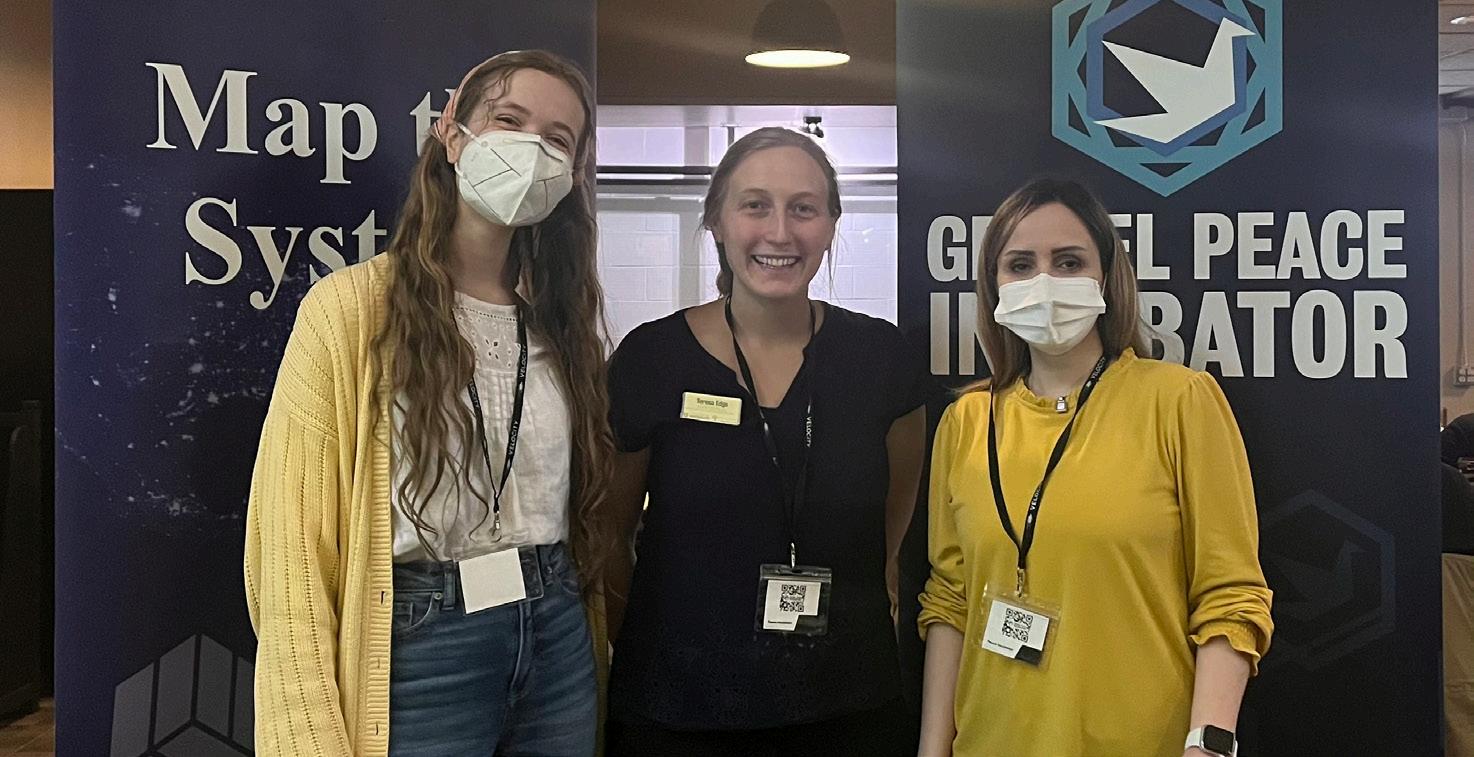
Here’s a look at the innovation calendar:
Jan 19 ‘What’s Your Problem?’ Velocity Workshop
Jan 23 Velocity Cornerstone applications due
Jan 30-Feb 6 Velocity Innovation Challenge
Jan 31 Map the System application due Feb 13-Mar 28 Design for Change GreenHouse
Feb 22 Velocity $5K Pitch application due
January 18, 2023 | science & tech | 5
BETHANY POLTL
Left to Right: Selah Woelk, Teresa Edge, Elham Mohammadi
Be the VOICE of Waterloo students.
13 new positions on the WUSA Board of Directors are open. We NEED you to get involved. Nomination period ends January 25th. Scan here to learn more.
arts & life
write for arts and life
Imprintis looking for arts writers! For more information, email arts@uwimprint.ca. www.uwimprint.ca

UW alum responsible for Canada’s first major vegan fashion show
From seminar project to successful non-profit: Vikki Lenola combines education with fashion to promote sustainability and animal rights.
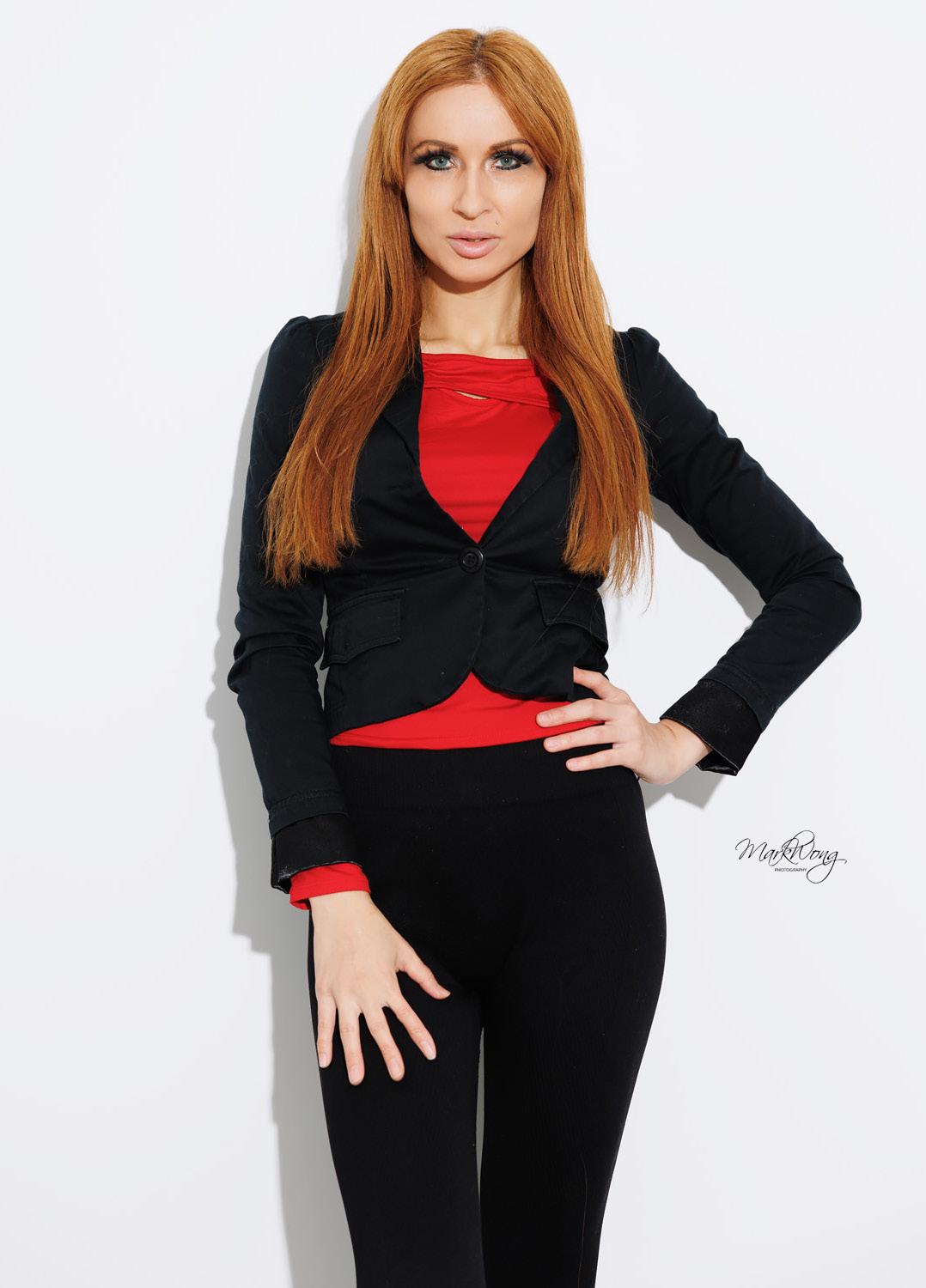 Meagan Leonard Executive Editor
Meagan Leonard Executive Editor
Another UW alum’s vision came to life last fall in the form of the Vegan Fashion Show — a nonprofit event that got its start as a senior year seminar project. The multi-faceted show was the brainchild of Vikki Lenola, who graduated from the Environment, Resources, and Sustainability program in 2020. The event was held Oct. 2, 2022 in Toronto, Ont., and raised $6,501 for the advocacy group Animal Justice. It featured clothing and accessories from vegan brands, along with food vendors, guest speakers, artists, and performers.
As a model and activist for the animal rights organization PETA, Lenola said her goal was to combine her two passions and answer some of the questions people continue to have about veganism, specifically as it relates to fashion, and demystify common assumptions about plant-based materials. For this reason, education was at the forefront of the show.
“I [will] be doing friendly outreach, and people genuinely have these questions, like [they ask] ‘Aren’t you wearing leather shoes?’” she explains. “They don’t know that there is cheap polyurethane leather, let alone plant-based leather or lab-grown leather. I really just want people to know there are alternatives out there.”
During the show’s casting call, models were invited to watch informational videos on sustainability and the future of fashion, and food vendors at the main event offered vegan versions of classic fare, like pizza and burgers. Each guest also took home a gift bag containing educational resources and samples. Lenola said during the show, no non-vegan products were allowed on the premises, with the idea that people would be encouraged to explore alternatives,
whether it be clothing, make-up, hair products, or an iced latte.
“I’m not trying to make everyone go vegan,” she says. “The minimum for me is just to have acceptance of people being vegan.”
Lenola’s own journey to veganism started back in 2009 when she was working on a project for school. She said she watched a video on the fur industry and felt like she could not continue living her life in the same way. For her, the transition did not happen overnight and she says that she understands the barriers people face in switching to a more sustainable lifestyle.
In these situations, she advocates for small changes and choosing the “lesser evil,” like shopping your closet instead of buying something new or adding a meatless meal into your weekly rotation. Taking the time

to get informed on environmental issues and sharing information online and within your social circle can also make a difference, she says. Again, it’s about breaking down stereotypes and making sure people have the correct information.
“When you’re challenging the status quo, it’s so important to have your facts together because you’re going to get push back,” she says. “There’s a lot of misconceptions. A lot of people think vegan leather is plastic and bad for the environment. But if you’re looking for the lesser evil, studies show that polyurethane leather is less than half as bad for the environment as actual leather.”
Today, education is at the forefront of everything she does, but when she was younger, Lenola says she never envisioned herself attending university. Though she wanted to make a difference in the world, she says she often struggled with imposter syndrome while she was completing her degree.
“I can’t believe looking back, how far I’ve come,” she says. “I went part-time, I almost dropped out, I took a year off—It took me eight years to finish my degree, but I still did it.”
Lenola says finishing what felt like an insurmountable task empowered her with a sense of confidence that no one can ever take away and led to opportunities she never would have thought possible.
“I remember thinking, I can’t even take care of myself — I’m such a loser right now,” she says. “But just finish. It’s so empowering. I can’t recommend it enough. Just finish and think about how empowered you’re going to feel when you’re done.”
A degree is a starting point, but Lenola says you still have to put yourself out there, make connections and decide to go after what you want. Today she runs a successful PR agency, was the assistant producer of the documentary Slay, and has worked with brands and designers throughout the Canadian fashion industry. She insists you have to be accountable for your own success.
“Things don’t happen when you’re sitting at home watching TV. Keep putting yourself out there and making connections,” she says. “I really believe that if you’re trying to do good work, someone who is in a better position than you, is going to see that.”
latest trends on
news online. January 18, 2023 | 7
Keep up with the
campus and community
Vikki Lenola wrote the business plan for the Vegan Fashion Show when she was a UW student in the environment, resources, and sustainability program.
VIA COLLECTIVE FASHION JUSTICE
COURTESY VIKKI LENOLA
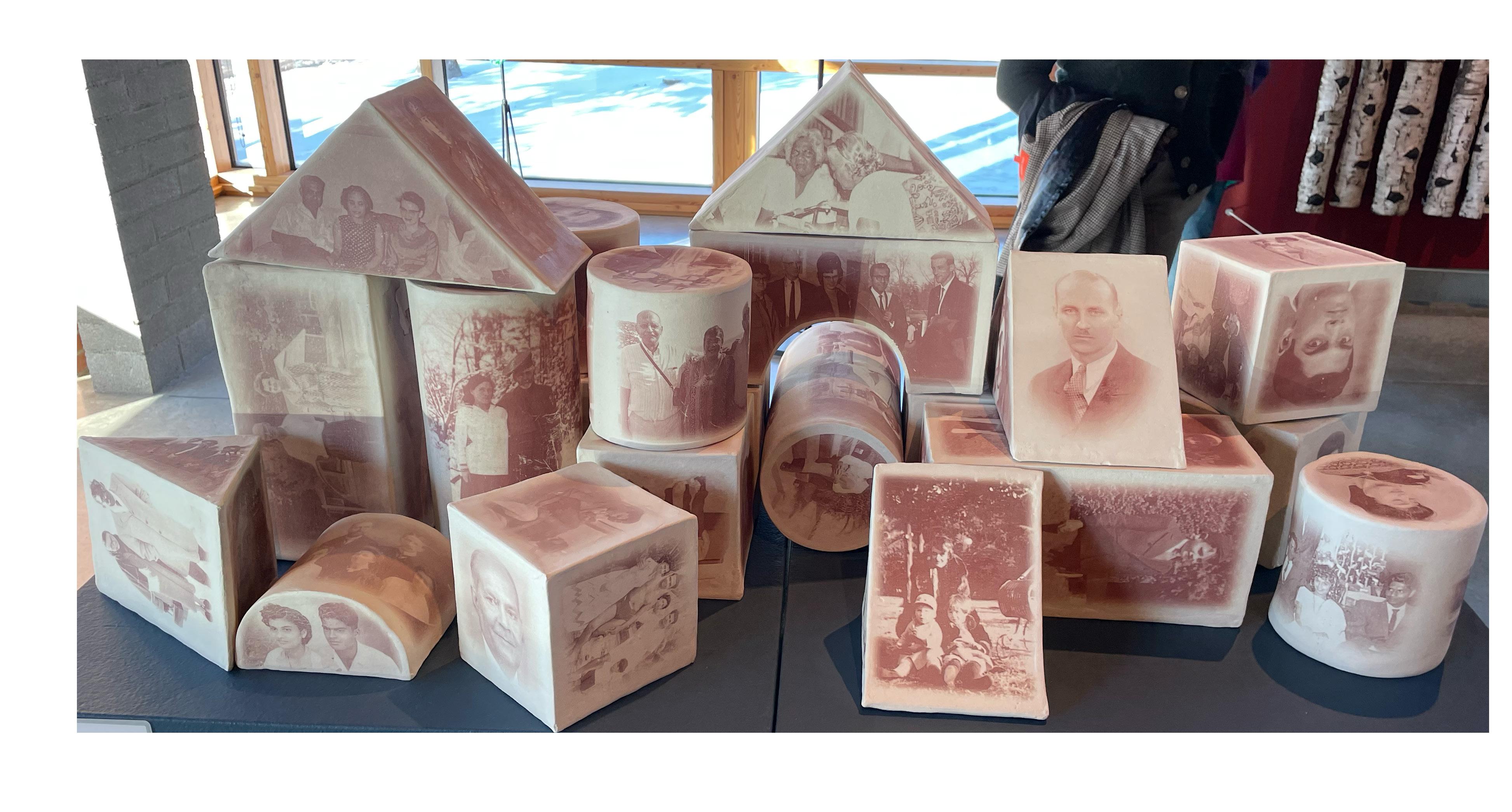

OClay & Glass Gallery’s Voices exhibit:
n Jan. 14, the Canadian Clay & Glass gallery concluded their Voices exhibit with presentations from interdisciplinary artists Behnaz Fatemi, Heidi McKenzie, and Jonah Strub. They then engaged in a roundtable Q&A session, moderated by Aaron Francis, where they expanded on the importance of diversity and representing lived experiences through art.
The first presenter was artist Behnaz Fatemi. When she immigrated to Canada from Iran in 2018, her artwork was impacted by shifting tides in her own life. Changes in language and culture reshifted the artist’s lens through which she saw the world. “[Being an immigrant] altered my perspective and worldview, driving me to think about how human rights, social justice and freedom within Canada and abroad are interrogated,” Fatemi said.
Her artwork, previously focused on people at large using patterns of repetition and reproduction, also grew more personal after immigrating. “I started by thinking about myself as a woman who was living under a dictator regime, moved to Canada and faced new challenges I had to figure out.”
Under an oppressive and patriarchal regime in Iran, Fatemi was unconsciously used to censoring herself, her feminine character and body. Art allowed her to undo the constraints she was so accustomed to, or at least gain solace from recognizing them. She began using triangle shapes in her drawings and pyramids in her sculptures as a “shelter to hide myself, express myself and be myself [in].” The triangles’ sharp
edges represent the brutality of the regime. Even the decision of what material to use — graphite for paper drawings or ceramics for sculpting — was an artistic statement in and of itself. She liked clay for its duality. “It’s beautiful, understandable, but it shows different concepts [like] violence.”
Artists Behnaz Fatemi, Heidi McKenzie, and Jonah and representation in Canada’s arts scene during
The violence in Iran is one Fatemi closely watched through reports, videos, and photos that kept pouring in. Civilians in more than a hundred different cities across the world continued to protest with chants like “Women are freedom” as Iranians met brutal, bloody repercussions at the hands of the regime. Civilians, including children, were being detained, forced to confess, and killed under Iran’s Islamic regime. “Watching the news[...], I felt guilty and I was thinking that as an Iranian, I have to do something for the people in Iran.”
Fatemi contacted Clay & Glass and asked if she could have a chance to redesign her sculptures to respond to the current moment. “Generously, they accepted,” she said. She added more pieces, all of which portray the mental and physical brutality of life in Iran. There’s a white canvas upon which red, blood-like paint is splattered to represent Iranians who have already been killed. It’s a simple image, but a powerful one that forces the observer to confront the violence we so often distance ourselves from. “Iranians, including me, want to show the world that Iranians do not want anything more than a normal life in which the free will and dignity of humans are respected.”
Fatemi has since had her work featured in various local galleries and was the 2020 recipient of the Emerging Artist Award in the
Waterloo Region. She currently studies at the University of Waterloo as an MFA student and continues to investigate themes of politics, power, gender, religion, and other institutions that interrelate and shape human behaviour on an individual level. While she can occasionally get exhausted from the painstaking work of researching and creating, it’s ultimately a self-healing process that she describes as “a remedy.”
Second presenter and artist Heidi McKenzie had a slightly different approach to identity art. In her case, the personal became more political overtime. “I had the opposite to Benaz [where] I started with myself and then moved outside myself.”
McKenzie thus began her presentation with an in-depth overview of her own family lineage. Her mother grew up in the United States with parents from Canada and ancestors from Ireland (the latter of which had immigrated to North America during the Great Famine of the 1860s). Similarly, during the 1860s, her father’s ancestors left India, Sri Lanka and Afghanistan for plantations in the Caribbean. Her father was born and raised in Trinidad, and met and married her mother in Hamilton, Ontario during the 1950s.
One of the first portraits McKenzie completed at Sheridan College, where she earned her thesis, was titled “Family Portrait” — a multi-coloured and multi-textured piece which encompasses “the various strands and shades and cultures of my family.” It acknowledges her family’s diversity of backgrounds both ethnic (Irish, Welsh, Scottish, Indian, Caribbean) and religious (Hindu, Muslim, Catholic, Protestant).
McKenzie continued her artistic studies at the Guldagergaard International Centre for Ceramic Research in Denmark, where she began working with photographs via white 3D porcelain structures. Her ceramics collection Boxed in captures “the feeling of being boxed in my own body” due to health issues.
This idea of charting the human body similarly comes across in a later project about her father, whom she described as a “really good amateur photographer.” When his health and body began to rapidly decline, she asked him if she could honour him by photographing his body up-close. She wanted to document him before it was too late. He agreed.
McKenzie then compiled a series of sepia-toned photos, showing his frailty, as well as his various scars from surgery and physical abuse. One sculpture, a house of cards, fragile and poised to fall, is one in which “multiple layers of meaning around fragility” are explored. Each photograph, made of porcelain foam substrate 0.02 inches thick, employs faded sepia — a clear representation of aging and time passing.
After exploring her family, McKenzie lands on herself as the individual. What does it mean to have grown up as a brown person who lived in a small town in New Brunswick with a sense of wanderlust? What did it mean to be an artist in a country that is “saturated with white settler-colonial values and aesthetics?” Her sculpture “Postmarked,” created during Canada’s 150, interrogates these ideas by presenting images of quintessential Canadian imagery to subvert them. “I like how myth-busting this is.” She pointed to one particular photo in which her father stands outside a truck which transports a canoe. “Brown
Nadia Khan Arts & Life Editor
8 | arts & life |
Building Blocks, 2020 by Heidi McKenzie
Artists discuss creation and diversity
Mondays, 2019 by Jonah
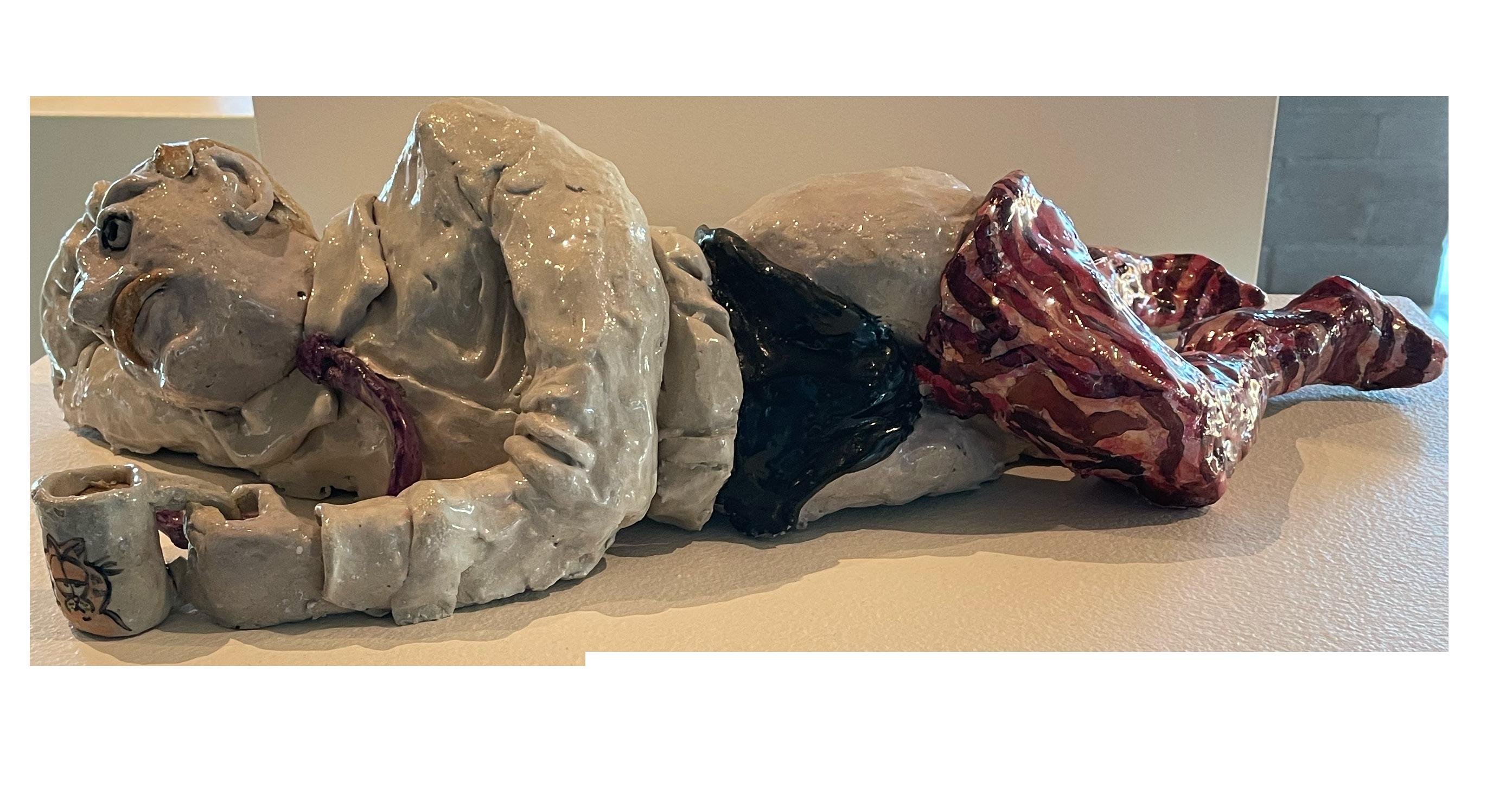
Strub answer questions on their lived experiences a roundtable event moderated by Aaron Francis
people don’t shovel snow, brown people don’t ride canoes,” she continued, in reference to the stereotype of brown people not being adventurous or athletic enough.
McKenzie’s art, which continues to bridge the gap between perception from the white gaze and personal truths, is still expanding in scope and style. She offered the audience a quick glimpse into an installation she is preparing for the summer. It contains contemporary photos of people carrying life-size photographs of their ancestors, as well as a video component “where they get to speak their voice and situate their ancestors.”
Absent are the sepias that became a staple in much of her previous work. “I’m working with colour [now],” she said with a laugh, in reference to her increased use of saturated pops of red and brown. She and her art are changing in real-time. In the last picture of the installation she presented, there is a picture of her in a kayak, holding another photo of her ancestor Rouniya. It felt like a full-circle moment: a brown woman on a boat, at peace in the present, acknowledging the many who came before her.
The third presenter, artist Jonah Strub started off by speaking about his upbringing in a tightknit Jewish community in North York, which he jokingly dubbed “the crown jewel of Toronto’s amalgamated boroughs.” While he grew up in a supportive household, happily immersed in Jewish culture at school and summer camps, he always felt that there was a piece missing because his community was ultimately a gendered one. “Boys like sports and girls liked Aritzia, and there was no deviation from that,” he said. “I wasn’t enough of a boy to be a boy, and I wasn’t a girl so I couldn’t be a girl.”
While studying Studio Art and Psychology at the University of Guelph, Strub didn’t relate to the culture he was exposed to, which was largely white and heteronormative. “I really didn’t feel like there was much of a queer community or Jewish community at this school,” he said. “I was one of three men [in my program] and the only gay one.”
Strub turned to identity art for answers, attempting to carve out his own visual culture. The Jewish art he was exposed to — Judeaca art about rituals and art on the Holocaust — wasn’t work that he felt particularly interested in. In a similar vein, the queer art he saw growing up was often overly sexual or about AIDS, which he also felt wasn’t for him.
Instead, Strub felt an inexplicable pull to kitschy art since he “was drawn to things that are considered by the general community as low-brow.” He also was drawn to camp, a visual subculture that celebrates exaggeration and extravagance. Through camp and kitsch, he had found art that spoke to him in the form of silly furniture and musical theatre.
Still, even the world of pop art was still often a hyper masculine and gendered one. “I really felt that there was a huge missing spot of people using camp and kitsch in the fine arts world as a means for creating queer art,” he said. So Strub decided to make art as an unapologetically flamboyantly gay Jew.
As an undergrad student, he uplifted the “silly and banal” nature of kitsch using traditionally high-brow oil paintings. He also created tongue-in-cheek paintings like “Girl Toys” (a consideration of gender roles in the toys that are “only meant for girls”) and “Gaybies,”
in which two cartoon babies are shown dressed in a Ms. Piggy and Kermit the Frog costume.
“I wanted to explore gender and gender assignment through Miss Piggy and Kermit who are a couple on TV,” Strub said. “They are accepted as a pig and frog in love and you still can’t see queer couples to the same degree,” he couldn’t help but dryly note.
A similar sense of humour carries through in the rest of his work, from his drag alter-ego Loxanne Creamcheese to the final painting he created during his undergrad degree titled “Women Who Made Me Gay.” The latter set of paintings is an homage to Jewish women in pop culture from Idina Menzel in Wicked to Ashley Tisdale in High School Musical since Jewish women in TV and musical theatre “have historically exemplified the aesthetics of camp.” In the collection, he also included a painting of his mother “since she literally made me gay.”
“I did!” she called from the audience.
Strub also has a collection of ceramic cats, called the Katzes, who sport cowboy shoes, body hair, fake eyelashes and cheetah print. Form-wise, he’s still experimenting. He wants to continue making more kitschy ceramic sculptures, a medium typically understood as “high-brow,” that physically demand space. He is here, and he is ready to challenge people’s perceptions.
Finally, during the Q&A session portion of the event, moderator Aaron Francis prompted the artists on their thoughts when it comes to creation and representation in a changing world.
How did they feel about the potential impact of artificial intelligence on art? Afraid? Excited? All three expressed openness to-
wards AI as something artists could wield to their advantage. “It’s a tool,” said McKenzie. It was a matter of who’s the one using it, and for what purposes.
One man from the audience, whose daughter was an artist, was interested to know how they each balanced the desire to pursue passion projects with the need to create commercial art that supported them financially. Fatemi recommended having a side job. McKenzie emphasized the need to “create from your heart” while still having a variety of pieces where some were for yourself and some were for sale. Strub added that he felt that the art he had the most fun making were those people wanted to buy the most. He enjoyed hearing stories of his artwork being conversation-starters in other people’s homes.
When asked by Francais about the political nature of their artwork, all three artists spoke about the need for representing lived experiences for not only themselves, but those around them who strived to be heard.
“It’s not just about Iran,” said Fatemi, reinforcing the universal nature of pain and suffering. “It’s about Afghanistan, it’s about Ukraine.”
“For every one of us that’s expressing that identity in our work, we’re reaching a thousand different people,” said McKenzie. “I know when I’m saying something in my art, it’s not just me, it’s for someone.”
“I want to create things for people with experiences like me who are really flamboyant, maybe never felt like they fit in throughout their lives, and for that to be my political statement,” said Strub.
A digital recording of the Canadian Clay & Glass Museum “Voices” roundtable discussion can be accessed on their Facebook page.
ABHIRAJ LAMBA
Strub
have your say
Submit your letter to the editor or your community editorial to managingeditor@uwimprint.ca.
Find more opinions at uwimprint.ca

Stay up to date with campus news on our social media channels @uwimprint
Disrespectfully: Third spaces are not optional
Alright, let’s talk about campus culture. UW has almost none: the big sports games are sparsely attended, the events are usually full of lacklustre early-departers, and if you aren’t studying, attending class, or eating, then you pretty much have to leave. We have a third space problem. A third space is a place that is not where you live and not where you work. It is a space designed to facilitate community interaction and socialization. That’s it, clean-cut and simple. As students, our libraries, campus classrooms, residences, apartments, or offices do not qualify as third spaces. However, qualifying based only on the definition of a third space is not enough — these spaces need to be functional for the communities they serve. For example, a public swimming pool is a third space, but if it is in a town that cannot afford to pay the water bill or whose residents have never learned to swim, then it is ineffective and will not serve the community. Third spaces that fail to serve their communities tend to sit empty, fall into disrepair, and eventually fade into the background or disappear altogether. In this article, we will refer to these as anti-spaces since they only really exist to waste space. For more information about the importance of third spaces and their systematic decline over the last few decades, I recommend “Bowling Alone: The Collapse and Revival of American Community” by Robert D. Putnam.
At UW, we have a few really useful third spaces, a few third spaces that are overrun with demand, and a whole lot of anti-spaces. At the end of the day, we have a moderately sized bullet hole in the chest of campus culture thanks to incompetent campus planning and a wide disconnect between university administration and the peasants they have to placate (that’s us!).
Let’s start with the useful ones: the Grad House… yup, I think that’s it actually. The Grad House is an amazing space, like a cafe or pub which serves cheap food and beverages (like $1 coffee and tea), hosts well-attended events, and most importantly, orchestrates and supports campus culture. The notable feature here is that the Grad House is a third space which actively caters to the budget, space needs, social desires, and lives of the population it aims to serve. Contrary to popular belief, the Grad House is available to everyone, regardless of student status. Still, it is designed for grad students and does offer them additional perks (like free coffee and
tea). In short, the Grad House is student-centred. Step one for this administration should be to open the Bombshelter space using the Grad House template.
Similarly, the third spaces which are overrun with demand are also student-centred. These include, but are likely not limited to PAC, on-campus cafes and cafeterias, and MC Comfy (remember three years ago when it was only going to be closed for two weeks?). While specifically designed for students, these spaces cannot not accommodate the sheer volume they were subjected to from day one. As a result, these spaces are less effective because students cannot find seating, equipment, and social infrastructure. Additionally, these spaces rarely host events (except for weekly exercise classes at PAC) and especially do not host effective community-building or culture-immersed events. These spaces are great and need expansion, something administrators have noticed and then completely failed to do. A great example of bumbling ineptitude is the recent expansion of PAC, which prioritized a pay-to-access climbing wall. Correct me if I am wrong, but didn’t our tuition dollars pay for that bitch? It fails as a third space because it does not address student needs. PAC’s treadmills, weight machines, and free weights are oversaturated with students. The result is a gym where people go to wait in line. Student’s wanted the PAC expansion to minimize crowded spaces and make space for gym-goers to actually work out. Students did not ask for a rock climbing wall, and, as it sits empty the majority of the time, I can only conclude that they are not brimming with gratitude for having been overruled by administration on its construction.
This brings us to our last type of third space at UW — the anti-space. Green spaces, the goddamn rock climbing wall, the weird little sitting spaces tucked into every oddly shaped corner in DC, and every other waste of space in this useless hell hole that wasn’t designed for people. I’m not sure who wants to sit in a long line with four of their friends on those stupid spindly stools in DC, but it sure as hell isn’t human beings. Similarly, in summer terms, even the reduced student population cannot make use of green space because of inherently flawed design motifs such as lack of shade, biodiversity, and walkability, leaving our fertile soils vulnerable to colonization by geese. Even those spaces, such as the biodiverse EV3 garden (for which admin can take no credit; students designed it) that successfully designed for one of these criteria failed
to design for all three. I love the idea of sitting outside with my friends in green spaces, but I am less fond of wading through a swamp to sit at a table with no shade so that I can look at dead grass and geese excrement. Would it kill them to add an umbrella? Maybe a garden or two? These spaces are not created for human comfort or socialization. As far as I can tell, they act as entitled, money wasting, corporate art meant to remind us of the campus culture that admin has stripped from the school. While this is not a UW-specific problem, Vivek Goel’s administration is exploiting every opportunity to alienate its students and sterilize the community it presumes to support. UW has been systematically shutting down third spaces like Fed Hall for years, and as these places vanish, so too does student life. Today, the third spaces that do exist at UW are bastardized and malignant, decimating peer-to-peer interactions, cross-program relationships, and community initiatives. In turn, this is linked to lonelier student populations which further exacerbates the mental health issues on campus and ultimately destroys the foundational community of UW. Am I meant to feel proud of a school whose administration would rather pinch pennies, sending emails about the mental health catastrophe and its casualties, instead of taking meaningful action against our isolation crisis? I hope not. However, it does not need to be like this. Posting memes on the campus subreddit about being lonely or depressed is not the upper boundary for campus culture. Introducing third spaces that are clearly accessible, financially viable, and functional for students is something universities around the world have done with measurable success. As a former student at the University of Ottawa, I can tell you that it is absolutely demolishing us in campus culture, and a significant part of that should be attributed to its third spaces. For example, uOttawa has multiple campus-run cafes, bars, and entertainment spaces which frequently host events like trivia, karaoke, open mic, painting lessons, etc. Better yet, these events are usually free for students to attend and have subsidized food and drink prices to try and make events as affordable and inclusive as possible. Other Canadian universities have third spaces like games lounges (rooms with couches and tables full of board games and video games), a Free Store (free thrift stores for clothing and other items left behind in residences or donated), and an emphasis on clubs that contribute to the campus com-

munity (for example, linking the cooking club to the free lunch program). All these spaces build community on campus and facilitate inter-program connections and campus-wide support systems that just don’t exist at UW right now. Part of the reason these third spaces are so effective is that they are designed for students using student input and functionality considerations. These design measures include prioritizing affordability, ensuring operating hours match student schedules, and making sure that the activities and events offered specifically cater to student interests. While I doubt a lecture series on the federal government would be particularly effective for UW (uOttawa has its quirks), offering a free workshop for soldering, excel programming, or basic electrical work might be a hit. Additionally, bringing back the Bombshelter and Fed Hall as third spaces could positively affect campus culture if it is done with the student body in mind. Similarly, bringing back MC Comfy and implementing similar spaces in some of the current anti-spaces could be equally effective.
In short, I am asking that the administration pull the whole upper half of its torso out of its rectum and redesign the school for the goddamn students.
Disrespectfully,
A student still looking for a good place to sit
opinions 10 | January 18, 2022
Rose Silivestru Poli Sci and Econ, 3B
MELISSA HUGHES
IMPRINT ONLINE
sports & health

Two Warriors skate for Team Canada
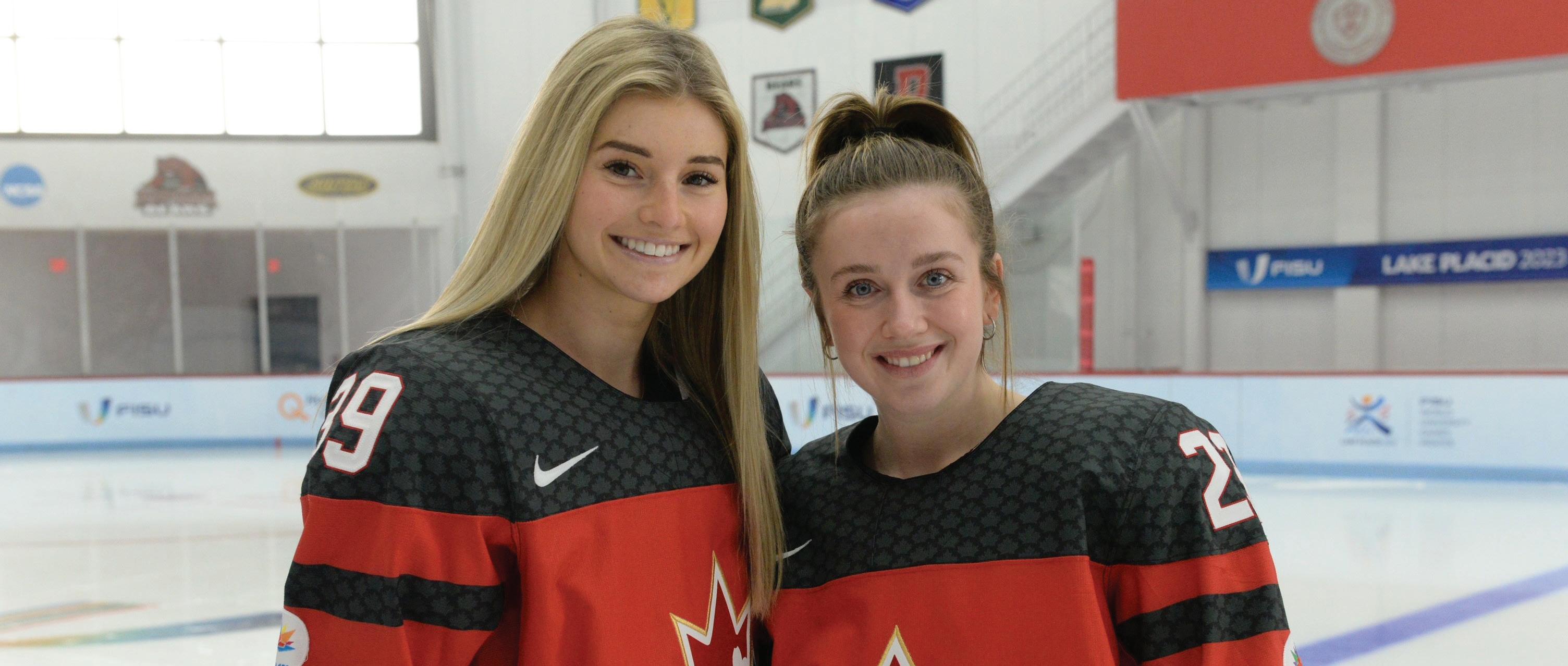 Andres Fuentes Publications Manager
Andres Fuentes Publications Manager
The Warriors women’s hockey program currently has two players and two staff members at the World University Games in Lake Placid, N.Y. as part of Team Canada. Forward Leah Herrfort and defenceman Carley Olivier joined Team Canada for the World University Games that take place every two years.
Team Canada started the tournament 3-0 with a 4-0 win over Slovakia, 5-1 win over the Czech Republic, and a 6-0 win over Japan. Olivier has recorded an assist in every game. Herrfort, who tops the OUA points leaderboard, is currently scoreless.
Women’s hockey has been a part of the World University Games since 2009. Over those six editions, Canada won the first three and is now looking to break Russia’s streak of three championships in a row. If Canada does make it to the final, it will be
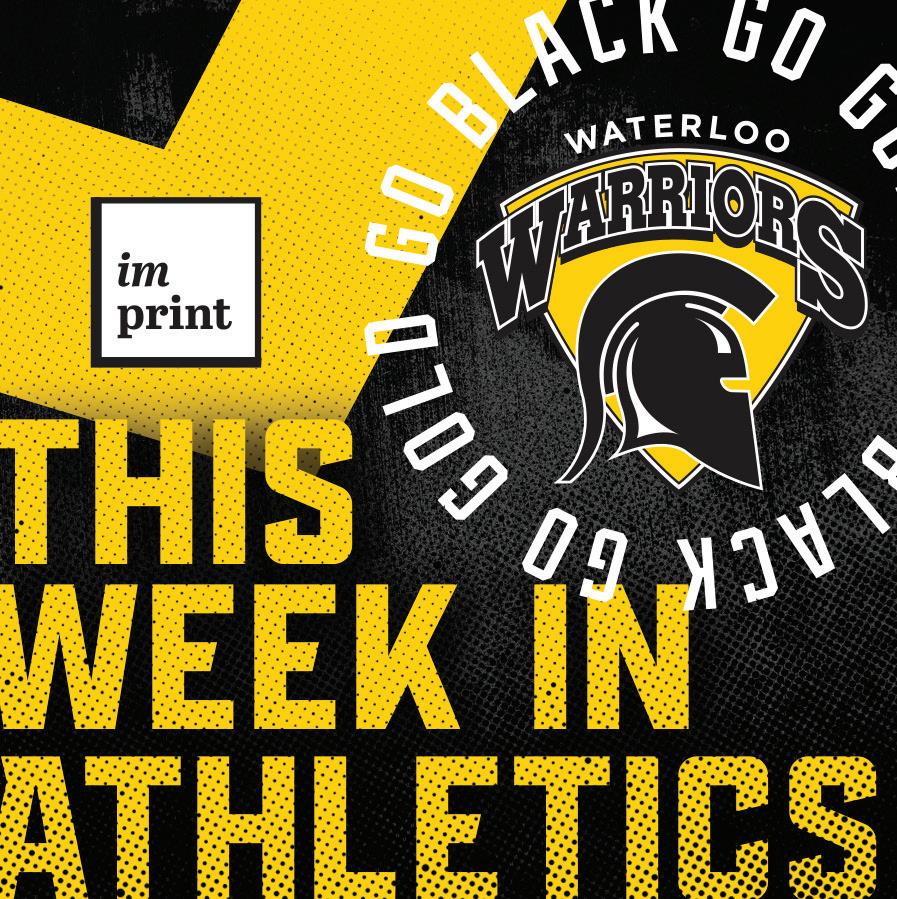

played on Jan. 21.
Speaking on the opportunity given to Olivier and Herrfort, women’s hockey head coach, Shaun Reagan said, “We are proud and excited for Carley and Leah being named to the U Sports team at the FISU games in Lake Placid. They have the opportunity to represent Canada at an international event.”
The Warriors are 1-1 since the departure of Olivier and Herrfort, having lost to the Brock Badgers, then pulling off an overtime


win over the Nipissing Lakers. Reagan believes that this opportunity is not just good for the players, but also for the program.
“Having two team members on the roster is outstanding for our program and gives both us and them exposure within Canadian hockey circles.”
The women’s hockey program is also represented on Team Canada by team therapist Jacqueline Schwantz and equipment manager Matt Sinclair.

January 18, 2023 | sports & health | 11
write for sports Imprintis looking for sports writers! For more information, email sports@uwimprint.ca JAN. 21 | 6:00 PM CARL TOTZKE COURT (PAC) VS McMASTER JAN. 21 | 8:00 PM CARL TOTZKE COURT (PAC) VS GUELPH JAN. 21 | 2:30 PM OWEN SOUND VS GUELPH JAN. 20 | (W) 6:00 PM (M) 8:00 PM CARL TOTZKE COURT (PAC) VS GUELPH VOLLEYBALL VOLLEYBALL HOCKEY WOMEN’S MEN’S WOMEN’S BASKETBALL PERSONAL TRAINING 3/5/10/20 SESSION PACKAGES AVAILABLE FREE WATER BOTTLE FOR FIRST 25 TO PURCHASE 5+ PACKAGES VISIT WARRIOR.UWATERLOO.CA FOR MORE INFORMATION REAL WEAR PINK WARRIORS
COURTESY UW ATHLETICS




















 Bethany Helaine Pöltl Science & Technology Editor
Bethany Helaine Pöltl Science & Technology Editor



 Meagan Leonard Executive Editor
Meagan Leonard Executive Editor







 Andres Fuentes Publications Manager
Andres Fuentes Publications Manager





